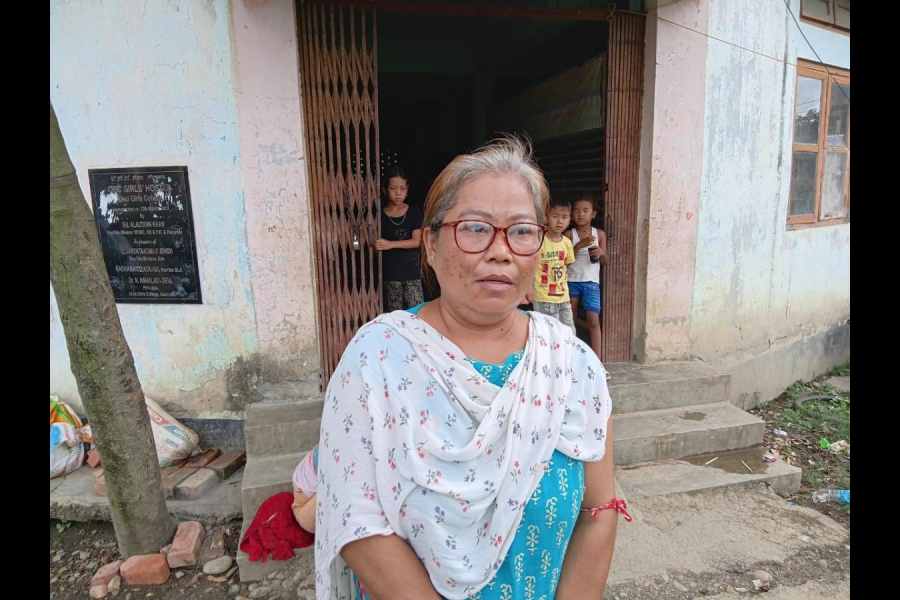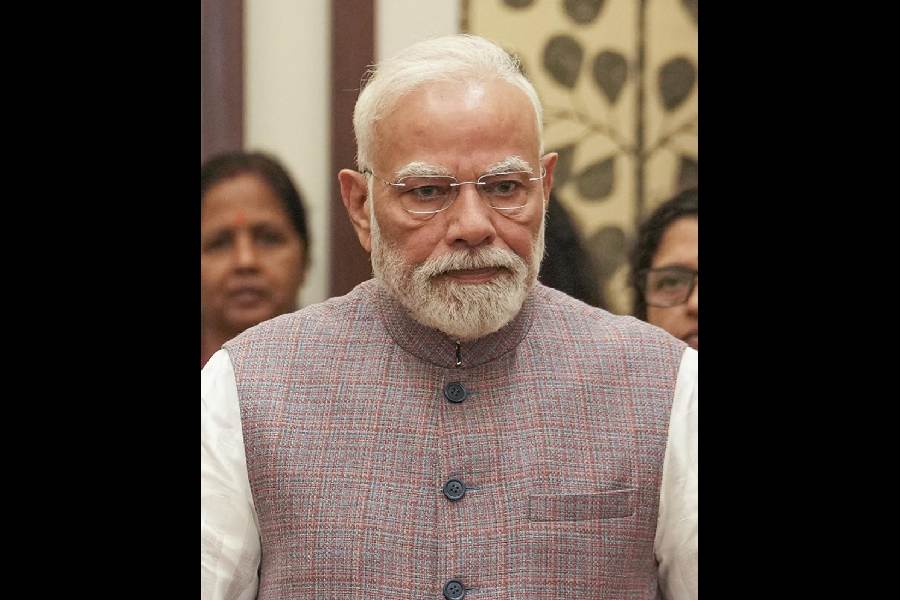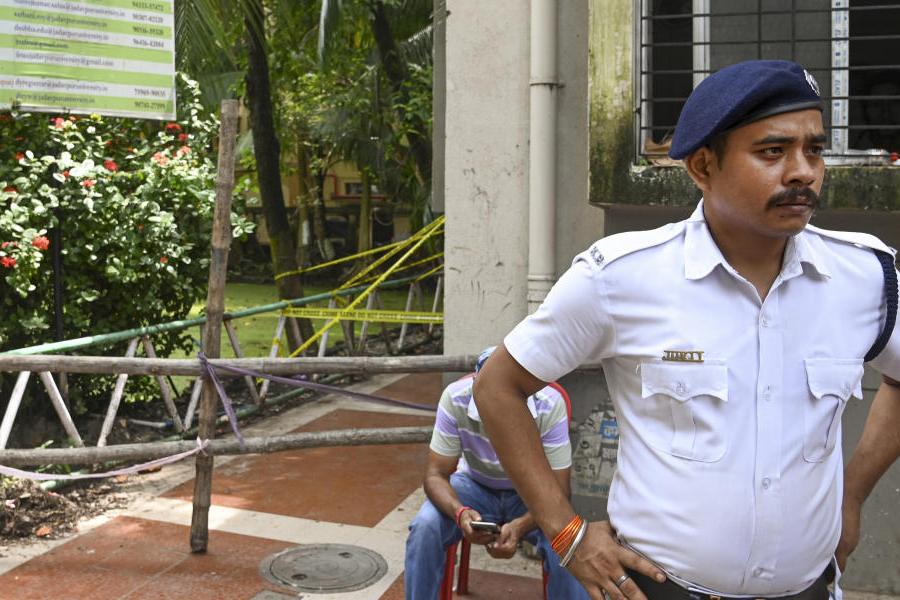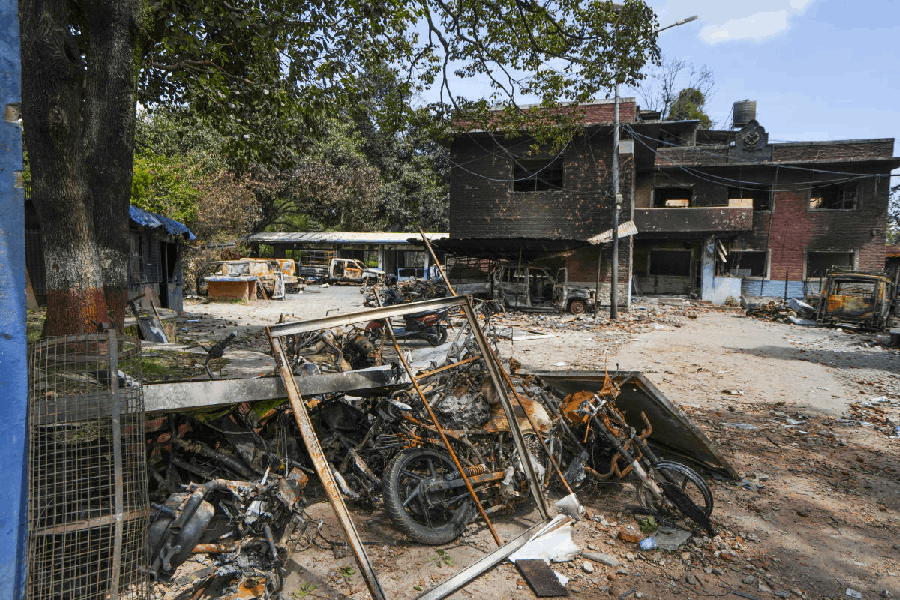 |
| Lalit Mohan Tiwari at a village in Kendrapara. Telegraph picture |
An alumnus of National School of Drama, veteran thespian Lalit Mohan Tiwari is known for his role as Sanjay in B.R. Chopra’s Mahabharat and also for being a part of Shyam Benegal’s Discovery of India. He was seen in major roles in Benegal’s Welcome To Sajjanpur and a recent Rajpal Yadav-starrer, Ata Pata Lapata. Here’s a first person account of a trip he made to the interiors of the state recently.
It has been close to seven decades that Gandhi said India lives in her villages. But I found every word of that statement true even today when I visited a few villages of Odisha on my recent trip to the state to attend a theatre festival. I found out how complete a world in itself these villages here are.
The road trip from Bhubaneswar was exhilarating. I got to see an unusual landscape as I travelled towards Kendrapara. It struck me that just a few kilometres away from the urban din of the state capital, the feeling of going far from the concrete world brings cheer to your lips. A vast, clean and clear landscape begins soon after you hit the highway towards your rural destination.
Large farms with men and women gathering crops and toiling under the sun, oblivious of political issues or materialistic race to collect branded accessories, cross you on both sides of the road. Quiet and serene, sparsely populated villages remind you that the beauty of nature is still abundant.
Reaching the village was like coming home. I have met travellers who make trips to Indian villages to see how backward they are or what so-called ‘facilities’ are missing. But that is not how you can discover or enjoy village life. Visiting a village as a member of it who knows that what is missing is a way of life and what is available is the most trustworthy and best in the world, gives you the best experience.
The ambience of the riverside village near Rajnagar — wells, kuccha roads, groups of chit chatting men laid back and without a care of the world, peaceful music of winds, evening prayers — it felt out of this world where you feel none of the problems like environment pollution, soil, air or sound pollution, problems of waste management even exist on the earth. Villagers keep their surroundings astonishingly clean unlike us urbanites.
I do not believe in complaining that the village does not have lavatory systems or 24x7 electricity. Well, the best part is that they just do not need it. They are capable of happily living with what they have.
Just two meals a day, some concern as well as little harmless gossip of the community, prayers and celebration in the evening and a peaceful sleep at night. With all that it has or does not have, the village has produced many bureaucrats and achievers in many fields.
I was happy to see they are breeding Indian cows; I did not see any jersey cow there. It was amazing to see how they store the paddy in a khani – a pit where the paddy is stored and covered with straws to last for over a year. The haat where everything needed by residents is available; bathing in rivers and tubewells; the pleasant weather during the day that gets chilly at night even in sultry summers; the different shades of greenery in the fields – these are memories I will always carry with me even when I return to Mumbai.
I even got a chance to watch jatra. It began around midnight and lasted for almost throughout the night. It could be amateurish but the energy and emotions expressed by the artistes was powerful. It was scenic with a moonlit river around and dark everywhere else except for the open air stage. The play was a fantastic experience and people loved it but without hooting or whistles. They appreciated it with more politeness than any theatre in the country!
So much to cherish and yet we hear about Odisha’s poverty. I feel the advent of materialistic comparisons and pointing out the missing modern ‘luxuries’ is nothing but murdering the beauty of and originality of our villages.
Odisha is lucky to have such villages and people here must save them and keep them as they are.










